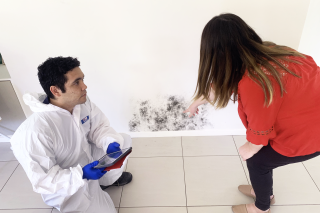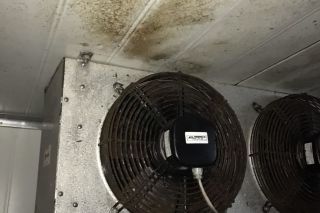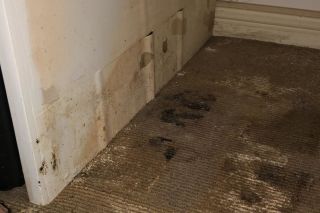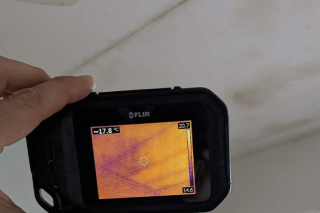Common DIY Mould Removal Mistakes
Mould formation is a common problem in a wide range of facilities particularly in areas that are hot and humid. It's pervasiveness, however, does not undermine the significant danger that mould poses to the health of individuals occupying the facility. Mould is particularly linked to asthma and other respiration problems, as well as simply being unsightly.
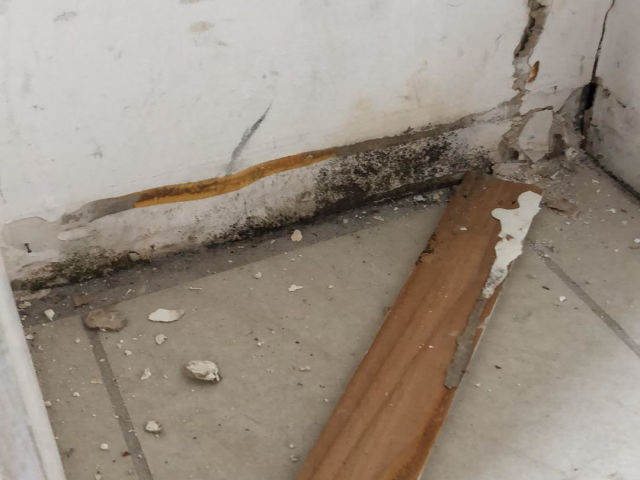
If you have a mould problem in your premises, you will want to remove the mould immediately. Nevertheless, before you set off to remove the mould in the facility, there are some key mistakes that you should avoid, otherwise you are only likely to worsen the problem and end up just wasting your time. Read the tips below to avoid these common mistakes. If you choose to hire a professional to remove the mould for you, we offer high quality turn-key mould remediation solutions. Please contact our office to enquire or book a mould removal.
Tips to Avoid Common DIY Mould Removal Mistakes
Tip 1: Firstly, a dangerous mistake is not wearing personal protective equipment (PPE) when removing mould. Mould spores are invisible to the naked eye, but can be very harmful when inhaled. If there is mould in a building, there is guaranteed to be mould spores in the air, and removing visible mould may cause more spores to be dislodged and released into the air. Protective equipment such as masks should be worn when handling mould. Wearing gloves, skin protective suits and enclosed shoes will also help prevent contact with skin so that mould spores are not later inhaled or transmitted to other areas of a building.
Tip 2: Secondly, avoid using the wrong mould removal chemicals. When trying a DIY mould removal procedure, there is the possibility that you will encounter numerous types of cleaners and chemicals that you can use. More often than not, people use bleach in an effort to kill mould, which is can be a mistake. As much as bleach might be effective in the dissolution of mould on hard surfaces, it would be ineffective in textured and porous surfaces. Even more important to be aware of is the fact that some concentrated chemicals tend to be corrosive, in which case you might end up causing more damage to the facility. Some chemicals would even pose a risk to family, pets or workers. It is advised that you talk to professionals for recommendations on the appropriate chemicals for your particular mould problem and condition.
Tip 3: Thirdly, you should avoid the mistake of not eliminating the source of the moisture that causes the development of mould. Mould usually develops as a result of high humidity levels in a particular facility coupled with lack of proper air circulation in the facility. Spillages, leaks, dripping faucets or over-watered plants could create opportunities for mould to continue growing. Key among the steps in the effective removal of mould is to eliminate the sources of moisture and ensure that there is proper air circulation in the facility. (See "How to Stop Mould Coming Back After Removing It.")
Tip 4: Fourth, you should avoid the mistake of cleaning only the mould that you can see. The moment you see any evidence of mould on the ceiling, floor and wall, it is reasonable to deduce that there is mould in parts that cannot be seen. Mould often grows in areas in damp, dark and undisturbed parts of the house, in which case you can expect it to grow in the inner parts of the wall, old flow panels and a wide range of places that may not be visible until they are opened up and examined carefully. In this case, simply removing the mould that is visible would only end up getting you tired without solving the real problem. Effective removal of mould necessitates a comprehensive preliminary inspection that will allow for the determination of the extent of the infection. Once the inspection has been completed, the cleanup process can start. Comprehensive inspection of the mould will provide insights into what should be cleaned and what should be completely removed. As much as cleaning is seen as the first line of defence as far as mould infestation removal is concerned, it is certainly not the last. In some cases of mould infestation, even the most comprehensive and advanced cleaning method will be ineffective in the elimination of the problem. For example, this is the case when the mould has aggressively colonised a surface that is made of pores such as wallpaper, wood, insulation or fabric. No matter how much cleaning is done, the pores cannot be effectively eliminated until the material itself is removed completely. Such cases necessitate that the materials are carefully and properly removed and possibly replaced with materials that are less vulnerable to mould.
Tip 5: This is a tip for mould prevention: do not make the mistake of keeping cardboard boxes, woody items or other porous material in humid areas. Places such as cold rooms and bathroom areas are likely to have higher than normal moisture levels. Cardboard, wood, papers and other porous materials are likely to retain the dampness for longer periods, in which case they could become a breeding ground for fungus in case of high humidity or if the items become wet. It is possible to reduce the potential for the growth of mould through repairing any ground and roof leaks particularly in areas where the wooden items are situated. Alternatively, substituting those boxes with metallic and plastic boxes would be recommended to prevent the growth of mould. This can be complemented by the separation of the boxes to ensure that adequate air circulates between them. The moisture in such places may also be controlled through the placement of several buckets of activated charcoal in the room.
Summary
Mould removal is not as easy as it is often made out to be. As much as DIY tutorials make it look considerably easy, there are numerous mistakes that could, in fact, exacerbate the problem. Indeed, it is often advisable that you contact mould removal professionals to assist in the comprehensive and professional removal of the mould. If you choose to remove mould yourself, then it is imperative that you take caution when removing mould to ensure that your efforts bear fruit and that they do not end up exacerbating the problem in the long-term.
If you would like to book mould testing, mould inspection, or mould removal services, please contact our office.
